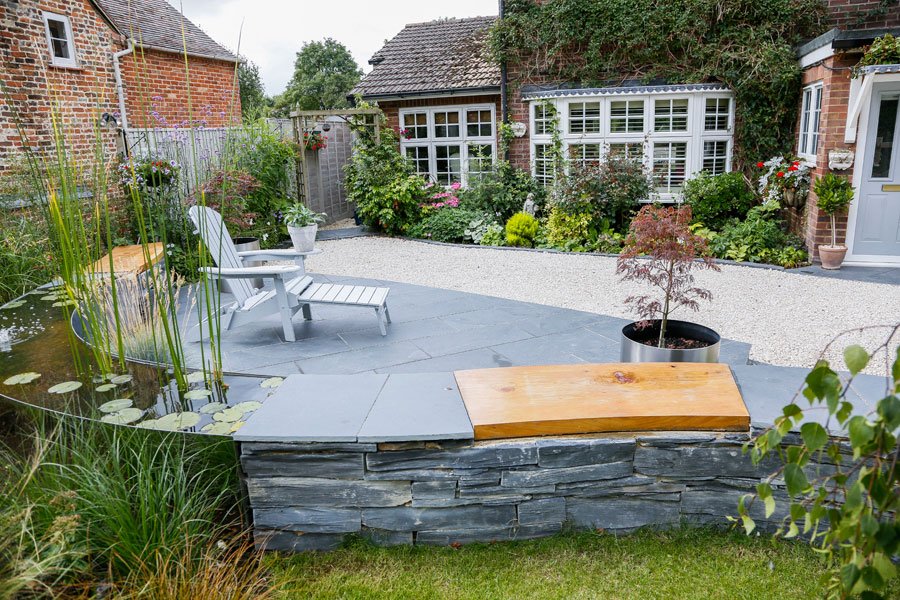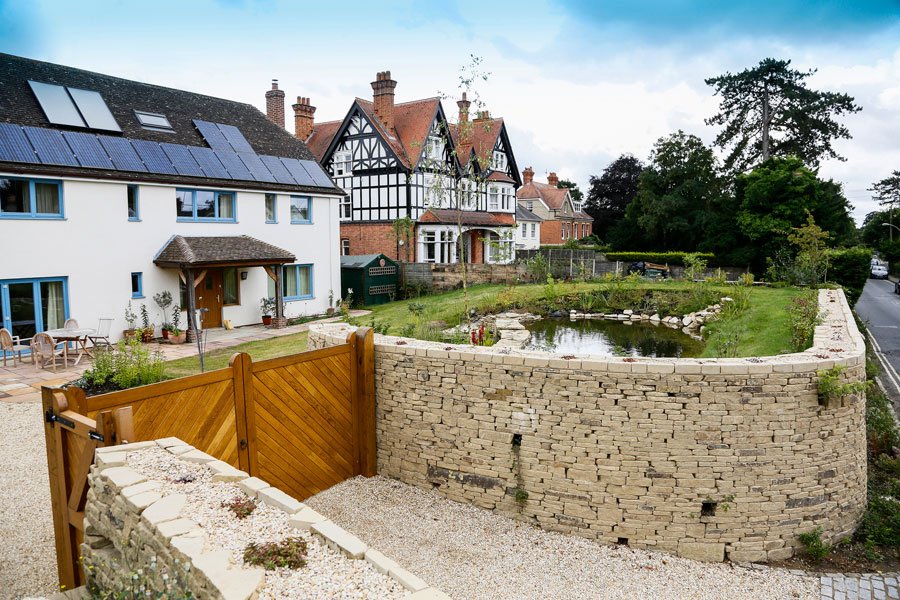
Front gardens are an important part of life in Britain today for more reasons than you might think. Not only is your front garden the first thing that greets you and your visitors, it also has to be multifunctional. While a front garden creates the all-important first impression, setting the tone for your home and what you may find within it, it often also has to accommodate space for parking and practical access. As a result of our increasing reliance on our cars, many front gardens have been transformed over the last few decades into monochromatic hard standing areas that do little to enhance or even sustain the environment. Times are changing, however.
Firstly, with the change in climate and more extreme weather conditions – notably frequent floods – the need for more effective drainage in our driveways and front gardens is becoming increasingly important. You may be thinking: why does this matter to me, my driveway doesn’t flood? There are however, other ethical and environmental factors to consider, even if you are not directly affected by flooding; if water runs off your driveway into the street it can increase the risk of flash floods and cause subsidence in your area.
The key to good drainage in your front garden is having water permeable surfaces. This may be grass or gravel or could be paved surfaces with integrated soakaways. The levels of your front garden are also important and even the slightest gradient will allow water to drain into flower beds or designated drains. When considering introducing a hard surface to the front of your property it is important to know your legal obligations, such as ensuring that there is no surface run off as a result of the first 5mm of rainfall.

With this in mind, regulations on paving front gardens were introduced by the Government in 2008 to ensure that your local environment is protected and the risk of flooding is minimised. If you’re not sure how to interpret these regulations the best thing is to seek the advice of a professional garden designer to formulate a plan which meets the legal and practical requirements.
According to research carried out by the RHS and highlighted by the BBC, one quarter of all houses in Britain are now exclusively gravel, concrete or paving, with no planting or greenery. Hard, impermeable surfaces absorb pollution which is then washed into rivers and streams when it rains, polluting them and killing wildlife. In contrast, front gardens with hedges, shrubs and areas of planting, not only help drainage but help regulate pollution and provide habitats for wildlife. Sounds like a win-win!
Having considered the environmental implications of introducing hard landscaping into your front garden, many of us are recognising the value that clever front garden design can add to a property. Improving ‘Kerb appeal’ or ‘The Wow Factor’ are often quoted as ways to make a property more attractive, not only while you are living in it but also if you decide to sell.

Now that the autumn months are approaching, it is important that your front garden and driveway are prepared for the change in weather. Are you always dodging puddles on your driveway when it rains? Is there often excess surface water for days after a downpour, which can ice over and become a hazard during the winter months? Does your garden put a smile on your face when you come home from work on those dark and dreary Winter evenings or does it make you feel depressed and want to rush inside? Do your guests feel welcome even before you invite them in?
As always, sound garden design not only allows you to meet your legal, ethical and environmental responsibilities it also can help you create a stunning garden you can enjoy all year round. If you’d like to find out how you can put the ‘Wow Factor’ into your front garden, please give us a call on 01491 280447 or email info@greenart.co.uk








